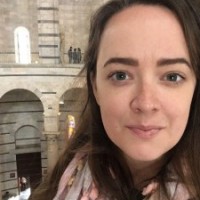The Franklin Ledgers Project: Phase 2
In summer 2020, the APS received support to continue developing the Franklin Ledgers Project through a National Endowment for the Humanities: CARES grant. The APS holds in its collection many of Benjamin Franklin’s ledgers that document his printing business as well as his position as Postmaster of Philadelphia. These ledgers offer a wealth of information about Franklin along with his wife, Deborah, and other Philadelphians. However, the archival material is exceedingly difficult to engage with as the structures are dense and fiddly. Yet these exact qualities make Franklin’s accounts a perfect fit for the Center for Digital Scholarship’s Open Data Initiative as the documents are conducive to being transcribed into a dataset and would be useful to scholars when disseminated.
When the first phase of the project, the transcription of the postal records, was nearing completion, the project was extended to include Franklin’s shop account books. The three ledgers selected for transcription were Ledger A, the Shop Book, and Ledger D. All three datasets are now available for download on the digital library. The compressed files are located on each ledger's page in the right column. All datasets can be freely used for non-commercial, scholarly, educational, or fair use purposes.
These ledgers were used by Franklin in the 1730s and 1740s and coincide with postal records from Phase One of the project, which allows the archival materials to mutually enhance each other. Consequently, transcription into tabular data allows for a more expansive engagement as the accounts—both the ledgers and the postal records—can now be analyzed in the aggregate. Take the Swedish-American painter Gustavus Hesselius. Hesselius appears in the postal records as having uncollected letters and having purchased items recorded in Ledger A, the Shop Book, and Ledger D. The ledgers are not always alphabetized nor are they indexed and, in certain cases, surnames are spelled in wildly different ways. If a researcher encountered these physical volumes in the Reading Room, it would be very difficult to discover every part of Hesselius’ accounts. Tabular data transcription of the ledgers allows for easy extraction of all of the painter’s accounts.
Additionally, isolating and analyzing categories of items sold in the shop or printed by Franklin—books, advertisements, paper—is possible through the controlled vocabulary and sorting functions of a spreadsheet. Consequently, the transcription of the account books provides a rich source of information for scholars in a wide variety of fields including the study of business, trade, and women in the 18th century. As all of this material is or soon will be easily accessible on the APS website, young scholars and scholars with less funding to travel for research will still be able to use this data.
The transcription of the 691 pages of Ledger A, the Shop Book, and Ledger D took a year to complete. In total, there are over 15,000 rows between the three spreadsheets that capture transactions and other entries in the accounts. For those who download and use the datasets, the labor of their creation will be practically invisible. Therefore, it is important to highlight that behind each row is a team of people who worked tirelessly for years. In the process of making the datasets, this team in the Center for Digital Scholarship made a series of decisions and compromises that enabled and transformed the final product. Without the delicate work of others to make high-resolution digital images from the archival materials, the transcription would have taken significantly longer because it required paleography and standardization choices for almost every line. Numerous contributors worked to add the datasets to the online catalog. Ultimately, these deceivingly simple spreadsheets were realized through an incredible amount of dedication and hard work from a group of collaborators committed to creating and promoting useful knowledge.
This project was made possible by numerous individuals through their support, time, and expertise: Cynthia Heider, Bayard Miller, Kyle Roberts, Julie Fisher, and Janine Yorimoto Boldt.
This project has been made possible in part by a major grant from the National Endowment for the Humanities: Coronavirus Aid, Relief, and Economic Security Act.
Any views, findings, conclusions, or recommendations expressed in this blog do not necessarily represent those of the National Endowment for the Humanities.

